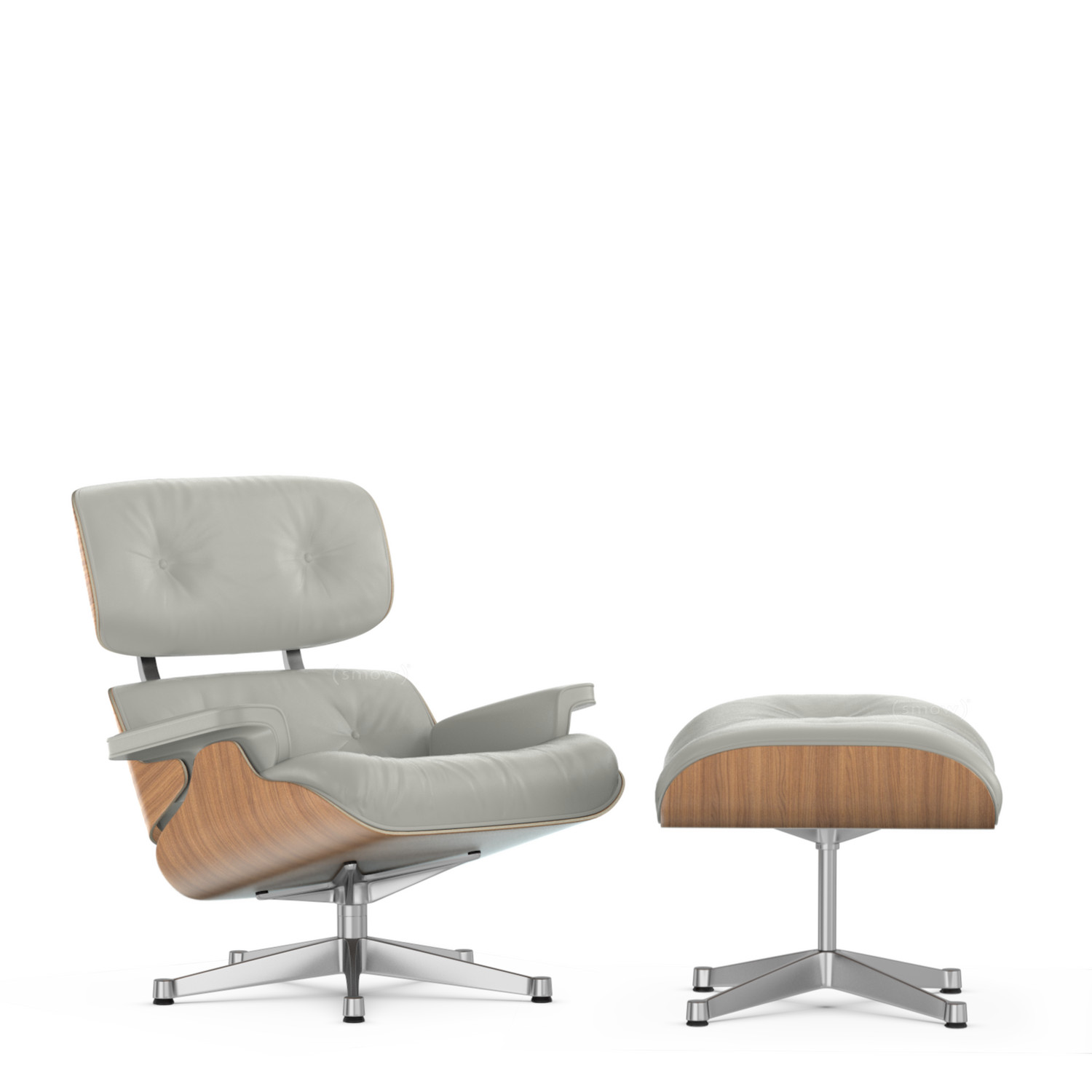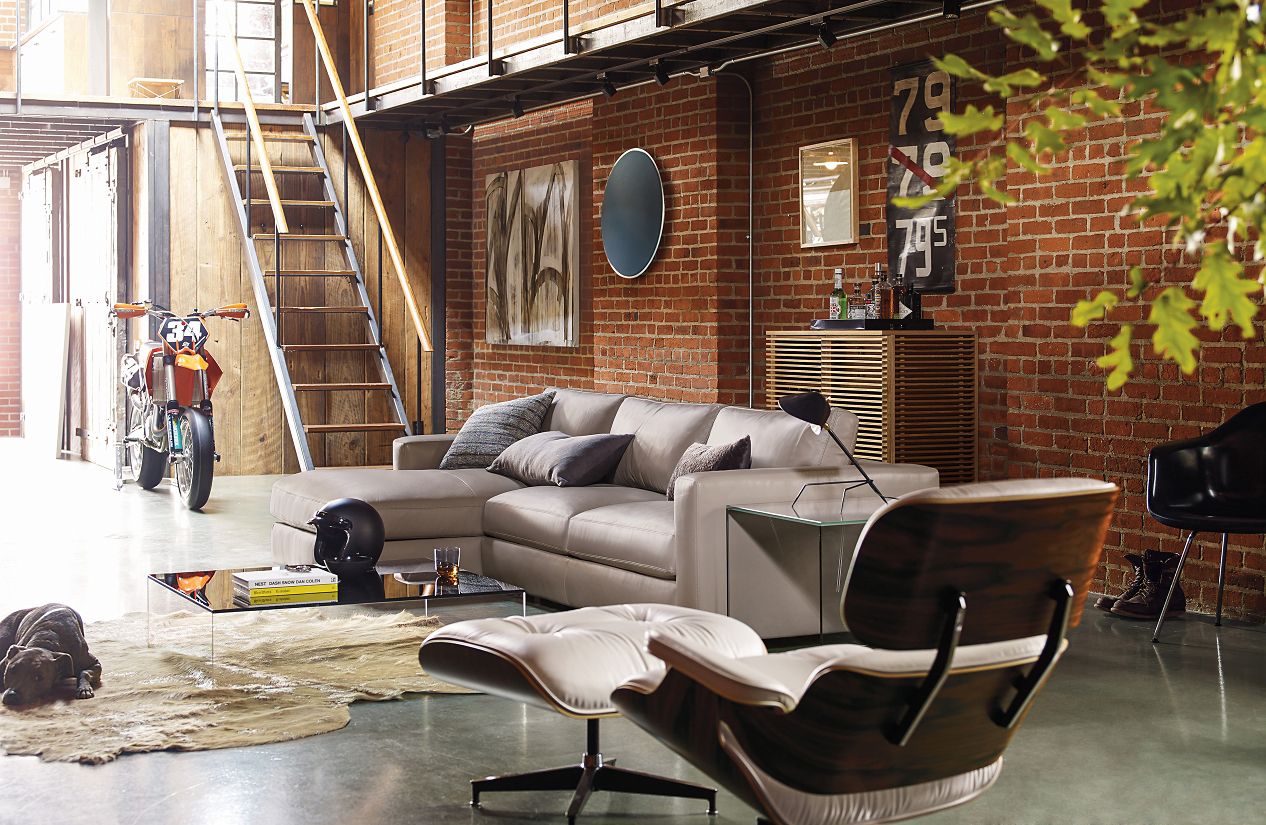EAMES LOUNGE CHAIR
baseman's mitt." The chair is composed of three curved plywood shells: the headrest, the backrest and the seat. In early production, beginning in 1956 and running through the very early 1990s, the shells were made up of five thin layers of plywood which were covered by a veneer of Brazilian rosewood. The use of Brazilian rosewood was discontinued in the early 1990s, and current production since then consists of seven layers of plywood covered by finishing veneers of cherry, walnut, Pal sander rosewood (a sustainably grown wood with similar grain patterns to the original Brazilian versions), and other finishes.
The layers are glued together and shaped under heat and pressure. Earlier models are differentiated from newer models by the sets of rubber spacers between the aluminum spines and the wood panels first used in the earliest production models (and then hard plastic washers used in later versions) early first series versions of the chair used three screws to secure the armrests, second series models used two, the domes of silence (glides/feet) on the chair base had thinner screws originally (1950s era) attaching them to the aluminum base, these are not compatible with later chairs. In the earlier models, the zipper around the cushions may have been brown or black as well, and in newer models the zippers are black. The shells and the seat cushions are essentially the same shape, and composed of two curved forms interlocking to form a solid mass. The chair back and headrest are identical in proportion, as are the seat and the ottoman. Early ottomans had removable rubber slide on feet with metal glides. Early labels are oblong foil type.

Other creative uses of materials include the seat cushions - which eschew standard stapled or nailed upholstery. Instead, the cushions are sewn with a zipper around the outer edge that connects them to a stiff plastic backing. The backing affixes to the plywood shells with a series of hidden clips and rings. This design, along with the hidden shock mounts in the armrest allows the outside veneer of the chair to be unmarred by screws or bolts. The chair has a low seat which is permanently fixed at a recline. The seat of the chair swivels on a cast aluminum base, with glides that are threaded so that the chair may remain level.
The Eames Lounge Chair first appeared on the Arlene Francis Home show broadcast on the NBC television network in the USA in 1956. Immediately following the debut, Herman Miller launched an advertising campaign that highlighted the versatility of the chair. Print ads depicted the 670 in a Victorian parlor, occupied by a grandmother shelling peas on the front porch of an American gothic style house, and in the middle of a sunny field of hay. It has been frequently featured in Frasier as a piece of furniture in the title character's apartment. In the final episode of the series, Martin Crane remarks that he finds it comfortable and hints that he may not have needed his recliner after all. A knockoff of the Eames Lounge Chair has been frequently featured in the show House, in the protagonist's office. Malory Archer's office chair in Archer is also an animation of the Eames Lounge Chair.
 Chinese and European companies began making direct copies. However, Herman Miller and Vita remain the only two companies to produce these chairs with the Eames name attached.
Chinese and European companies began making direct copies. However, Herman Miller and Vita remain the only two companies to produce these chairs with the Eames name attached.In 2006, to commemorate the 50th anniversary of the chair, Herman Miller released models using a sustainable Pal sander rosewood veneer.
A 1956 rosewood Eames Lounge Chair and ottoman are in the permanent collection of the Museum of Modern Art in New York City. The set was a gift of the Herman Miller Company, donated in 1960.

Comments
Post a Comment